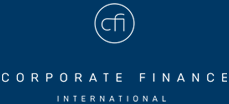HUMAN CAPITAL MANAGEMENT M&A MARKET DYNAMICS
The first quarter of 2025 reflects changing sentiments around the future of the Human Capital Management industry, with strong optimism transitioning into uncertainty on the heels of trade restrictions and regulatory changes impacting key sectors. Despite the turbulence, the staffing market remains on pace to post modest growth of ~1% by year-end. Continued advancements in platform technologies and an increased demand for outsourcing services mark the rapid evolution of a resilient staffing landscape.
M&A transaction volumes in Q1 2025 resumed on an upward trend similar to the final quarter of 2024, posting triple digit deal closures after four quarters of suppressed activity. The uptick in dealmaking provides reason for optimism amidst an uncertain economic environment. Paired with the apparent slowdown of U.S. staffing market contraction and sustained GDP growth, Human Capital Management has the potential to rebound as the year progresses.
What We’re Discussing With Clients
U.S. Staffing Market Slowly Returning to Growth
Following two years of U.S. Staffing market size declines, driven primarily by normalization after a period of record growth, 2025 has remained relatively flat despite economic uncertainty as U.S. GDP growth holds at 1% and economic conditions impact key staffing sectors in drastically different ways. For example, manufacturing and light industrial staffing is forecasting a low single-digit decline through year-end 2025 due to disruption from tariffs, while IT staffing is anticipated to persist due to a strong pipeline of client projects. Overall, some level of rebound is forecasted in 2026 for the U.S. Staffing market as policy becomes more stable and GDP growth climbs closer to 2% year-over-year. The rebound in market size has taken longer than anticipated, and may remain slow, but a flat 2025 shows promise after multiple years of double-digit declines in the U.S. Staffing market.
Hiring Activity Remains Flat Across Key Sectors
Across key staffing sectors, the majority of job openings exist either in private healthcare or professional and business services. While job openings are trending down in most sectors, hiring activity remains relatively flat year-to-date 2025 even as month-to-month activity oscillates between growth and contraction. Adjacent to hiring activity, recruiting difficulty remains highest in healthcare but has been mostly stable across other key sectors. Average time-to-fill current openings varies by sector, with healthcare, manufacturing, and information remaining flat over a rolling 6-month average. Time-to-fill is trending lower for professional and business services, while transportation, warehousing, and utilities are observing higher than average values over the same period.
Uncertain Economic Outlook Persists
As the introduction of new trade restrictions continues, economic uncertainty is at an all-time high in the U.S. and is reflected in less optimistic business outlooks, hiring plans, and investment plans across Fortune 500 companies. Hard data, such as U.S.-bound freight volumes, suggests that significant disruptions will continue in the latter half of 2025. As companies tighten their belts in terms of capital expenses and hiring practices, the U.S. Staffing market will continue to experience a lag in growth. On the bright side, U.S. GDP growth is forecasted to persist through 2026 and clarity on trade restrictions will help facilitate a rebound in U.S. Staffing demand as the dust settles.



